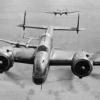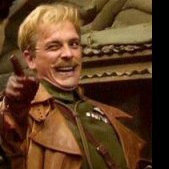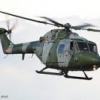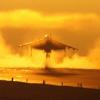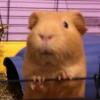Search the Community
Showing results for tags 'ww1'.
-
Started this morning The only problem with the body - relatively large hole that can be easily cured with dissolved putty, excess of which is removed with nail polish remover result - the hole has vanished I replaced plastic gun with aluminium tube from Albion Alloys that I sanded to make it more cone like Also replaced machine gun barrels with thin tubes First coat of primer to reveal defects
-
Challenging kit - I still can not believe I dared Whatever .... First few shots Let's get started Two out of four engines I'm not happy with the lozenge decals that are supplied with the kit. Thinking about printing my own 5 colour night lozenge decals. Test pattern prints Dry fitting of engine assembly to nacelles The /\-shaped stands seem too fragile and missing cowlings - thinking about replacing them with metal struts Bombs. A lot of bombs. Each requires sanding and puttying
- 114 replies
-
- 7
-

-
Hello all. Now that my Mustang STGB entry is finished and I cannot find a suitable model for the D-Day GB I thought I would throw my hat in to the ring with Emhar's MkA Medium Tank. I've never done armour before (apart from the odd Rhino Transport from when I played 40k) so this will be a new experience for me, also on the off chance that you've seen either of the other two builds I've done recently you'll see that I'm just returning to the hobby. So don't be expecting anything spectacular. Still armed with this walk around and this book I'm going to gove it a damn good try. I'll be modelling the vehicle after the one featured in the walk around which was commanded by C.H.Sewell who was awarded the VC for rescuing the crew of an overturned tank and being killed in that action. This vehicle is currently on display at Bovington Tank Museum. I'm not going to super-detail the thing or anything, for one thing I'm nit up to the task, but I will be adding and subtracting things to make it look more like the one at Bovington. Which i think is only going to involve some very slight modifications such as adding fuse wire grab handles and the like. Anyway, on to the pictures: Messy workbench. With my Mustang STGB hanging out on the corner of the desk begging to be knocked off. Box shot. (blurry) Sprue shots Construction started but...I forgot to take any pictures. So here's some of the little bits I'm adding. This flappy thing was about 12" wide at scale so I chopped it off and added some thin plasticard that was formed around the original piece. It should look like this: Though looking at that thing below...I realise I've left it as the kit intended which is wrong as they have a weird stand off behind them. I'm not sure if I can just pull it off or I might have to fill the gap. If I do remove the piece though the 'flappy thing' will hang over far too much. The fit of the top deck was also wuite poor and will require a lot of sanding and filling. Which means I'll have to add the rivets back. I've heard PVA glue and a cocktail stick can be used for this? I also had to add a shim of plasticard under the cabin. Anyway, that's where I'm up to now. I just need to decide what to do with the 'flappy bit' area. Cheers for looking.
-
Ahoy Chaps. I was intending on taking a bit of a hiatus from model makering and focus on playing with trains for a while. But I thought some form of WW1 Centenary tribute build would be in order. So here is my build of the Revell 1.28 Sopwith Camel, No. 10 Squadron, Royal Naval Air Service, Teteghem, France, March 1918 All brush painted with Revell acrylics, except for some Humbrol Acrylic Flesh and Tamiya Semi-Gloss clear. This is obviously an example with the rarely seen upsidedown axle modification, because I'm an idiot... A lot of flash, sink marks and holes that hadn't quite made it all the way through. The instructions were a touch vague in parts, in others I would argue just plain wrong... Fit was a bit troublesome with a lot of the parts thicker on one half than the other, so there are a few somewhat impressive joins on it... The worst part is probably the fit of the ribs into the wing, trying to work out where to remove the plastic. Anyhoo, it looks like an aeroplane, sort of..
-
Hello everyone, this is my first post on this lovely forum. I didn't know where to put this diorama with Hansa-brandenburg B.I by Legato kits so I decided to post it here, I hope it's OK. This model was a nightmare so Im not really happy with a result but Im happy that is finally behind me :-\. Diorama was built from scratch, The tree was made of a copper wire and putty, The bench, well and other wooden elements were made of balsa wood,the axe was made of shaving razor, I used a NOCH grass for rail models and for the leaves I used a home-grown dried spices. The Figures of mechanic and a civilian is by Preiser, also in scale 1:72. All in all it was a quite fun build Here's the result: CHEERS FROM SLOVENIA, regards Gašper Podbregar
- 17 replies
-
- 14
-

-
Hey everyone , This is my 1/72 Airfix Sopwith Pup, finally got it finished after about 2 months of on and off building Please have read and take a look Brief History The Sopwith Pup was a British biplane fighter built by Sopwith Aviation Company in 1916. It entered service with 'A' Squadron of the RNAS (Navy Branch) in May 1916. By October that year, the plane was on the Western Front fighting with 8(N) squadron where it's exceptional performance saw it shoot down 20 German aircraft in 4 months. In December of 1916, the RFC received their first Pup, with it being used in 3,4,8 and 9(N) Squadrons before being replaced by the heavier-armed Sopwith Camel in mid 1917. The Camel was a much more successful aircraft, having credited over 1 200 enemy fighters destroyed; and it's ground-attack role also being effective until the end of the war. The Model I found this build easy enough for a beginner like myself, but the kit did need a bit of filler here and there and some work done, but hey can't complain The fit was alright, and the painting etc. was easy enough. Scheme This is Sopwith Pup N6453. Flown by Squadron Commander Edwin Harris Dunning DSC (1892-1917). Dunning was credited for the first pilot to land an aircraft on a moving ship, when on 02/08/1917 he landed on HMS Furious. Tragically, he was killed the second time he attempted it when the engine stalled on approach. He is buried at St. Lawrence's Church, Bradfield, Essex. Thanks for looking Dylan P.S Yes I didn't attempt rigging
-
Hi all, Fresh off the butchers block is this old SMER Albatros, its an 'interesting' kit, thought i'd use it to practice wood grain using oils that i've never used before, came out ok, in fact the kit scrubbed up ok with a bit of work. Did a bit of re-scribing, lots of sanding and a bit of scratch building, all good fun! So here it is: 1/48 SMER Albatros, Lt Werner Voss, June 1917 cheers Simon PS: dont suppose anyone has some spare decals for this kit as I damaged one of the heats?
-
Hi folks, having a touch of modellers block on my usual aircraft genre so really enjoying an armour/figure build in the D-DAY GB at the moment,while in my lms saw this set and as I am very interested in the first world war had to buy it and have a go. Now I am by no means a figure painter so it won,t win any awards but should be fun.should get a start soon.
-
To celebrate 100 years since the formation of the Royal Naval Air Service on 1 July 1914: Flight Sub Lieutenant Raymond Collishaw's 1 1/2 Strutter from the Western Front in 1916. I believe his gunner in this aircraft was R S Portsmouth for the famous French/Royal Navy bombing raid on the Obendorf Mauser works. This is the Eastern Express issue of the old Toko kit. A nice build, well moulded and relatively easy (in biplane terms) to build. FLY NAVY FredT
- 1 reply
-
- 7
-

-
- RNAS
- 100th Anniversary
-
(and 2 more)
Tagged with:
-
Hey again everyone, So tonight after finishing my Tiger, I decided it was time to start something new. I found this on one of my shelves, don't know if they still sell them anymore - was £50 at the time though and I got it in 2009 (when I was 9, yes) for the 100 years of Naval Aviation thingy. As you can see, it contains a Sopwith Pup, Fairey Swordfish, Vought Corsair, Westland Lynx? (I think) and a Harrier. Here is the box:And with everything out : Sopwith Pup, Fairey Swordfish, Vought Corsaid, Westland Lynx (Navy) and Harrier. (FROM LEFT TO RIGHT)It also has in it a lovely little booklet (With history etc.) , instructions, sheet of decals, 12 X paints, glue + 2 X Brushes. Here is the scheme (only one here) that the plane follows in full colour! And the instructions - only one sheet of A4, very simple and nice - apologies for the blurry picture though Now, down to the actual kit. It was sealed in a bag which (I guess) helps to protect everything, there was not much flash on the whole and, being a smaller kit, it only came with 2 Half-Sized sprues of normal Airfix grey plastic. When I opened the bag: Now, the initial construction started off with gluing the Pilot (nicely molded in an apt position) who I called Jeff - into his seat Happy days as far as Jeff's concerned, he gets £1 for doing it (comparison). After I'd done that, it took me less than 5 minutes to assemble everything in the cockpit, the machine gun, engine and propellers. Here is a picture of them done, prior to painting. I have a vague idea of what I'm doing *insert comical laughter* at the moment, and when Jeff + his BEAUTIFUL cockpit are done then the 2 fuselage halves will be joined together to create something wonderful - my child. First plane ever hmm.... *****More updates when i build them***** (and paint, obviously) Thanks for reading guys + girlies CP
-
Hi folks another £3:25 mega kit! Revell,s little monoplane and a couple of friends,old kit but great simple build my attempt at rigging using stretched sprue last photo shows all three WW1 builds total cost £11:50,cheap and cheerful entertainment many thanks for looking.
-
Hi all, First thread here. I've done a few builds on the ww1aircraftmodels.com forum and I thought I would continue on here as I've got a few non WW1 subjects to build.. However, I'm half way through a Salmson so I thought I may as well post this here as well to kick off.. Picked this up at Telford - usually stick to 1/32 for WW1 but I was very impressed by the kit and had to get it! It's really like a 1/32 kit that's been shrunk.. Going for this USAS colour scheme - I just like the top wing markings.. The engine and gun ring - very good in this scale - but very fiddly! Some nice phot etch supplied - decals for individual instruments The fit of parts is exceptional - it really does just fall together.. They supply a very clever cardboard jig for the lower wing fitting.. Well, that's where I'm up to so far, painting up next . If anyone's debating whether to get the kit - I wouldn't - it's lovely.. Thanks for looking Guy Ps I'll post some completed model threads of my previous efforts shortly
-
Hi, Just joined but posting a few previous builds.. Wingnut kits are exceptional.. Apologies if it's a bit picture heavy! Thanks Guy
-
Morning, Another previous Wingnuts.. I think this has been the nicest Wingnuts kit to build - nice and solid.. Thanks for looking! Guy
-
Hi again, Another previous build.. As always with Wingnuts, a lovely kit Thanks for looking Guy
-
This is my third attempt at a WW1 aircraft in 1/48th scale. This time I chose the Eduard Nieuport Ni-23 (kit number 8075) which looks like it has now been discontinued (as at time of writing). I'm not a great fan of Eduard's "basic level" instruction sheets for these kits - I was looking for an out-of-the-box build and found myself trawling the web on a number of occasions to find out the positioning of a number of parts, particularly in the cockpit. Perhaps I just need to build more WW1 kits to become more familiar with these areas? Anyhow, it was reasonably straight-forward to build once I worked out what I had to do and where things went. The main colour was actually sprayed this time from a Humbrol rattle can - Aluminium. As an introduction to "air-brushing" it was quite easy, but it's as far as I'll be going in that direction. Everything else was the traditional brush work. The wood effect was a variety of browns smeared and wiped around whilst wet. The decals though were far from simple to apply - every single decal I applied bar one split into two or more parts once wetted. I've no idea why, but it was a real pain. Too thin for their own good, maybe? Rigging was of the "knitting-in elastic" variety. Weathering was a mixture of acrylic artist powders and Tamiya weathering plus some zip brushable pen work (e.g. the wing rib shading). She was given an overall matt varnish spray to finish. The scheme, according to the kit is for "A DUX built Nieuport 23, flown by Kpt. Brodovicz, 10th Squadron, Imperial Russian Air Force, Spring 1917". There's a slightly different alternative in Eduard's 1/72nd combo kit (7073) that has this aircraft being flown by Lt. Boris "Bob" Guber - the roundels are different and it has a serial number applied. Either way, I prefer to simply refer to is as "BOD", not "BOB", though it's more likely "ODD BOD" for my model. I'll live with the fact that any resemblance between this model and the real thing is coincidental. This is how it came out ... Comments, criticisms and advice always welcome - particularly on suitable weathering techniques for WW1 aircraft. It is back to the Harrier Project now and the Sea Harrier FA2.
-
Bristol M1.C 1:32 Alley Cat I first remember becoming aware of this aircraft in the 1970's when Kelloggs were giving away little kits of First World War planes in their cereals, I think around 1/144 scale. I seem to recall an Albatros, Camel, SE5a, and Fokker Triplane, as well as this strange little monoplane I had never heard of. Well in those days my knowledge of aircraft was largely limited to what Airfix produced, and they never did a Bristol M1.C. That seems to sum up this nice little aircraft, few people have heard of it and it has largely become forgotten with the passage of time. =It is a shame because it was by all accounts a very successful design, and something of a 'hot ship'. Designed by Frank Barnwell (F2.b, Bulldog, Blenheim), it made great use of streamlining to obtain maximum performance, most notably by eliminating the more usual biplane wing and all its associated strutting and rigging. The single shoulder mounted wing with minimal bracing, and neatly cowled Le Rhone 9J with its big spinner contributed to it being some 40 to 50 mph faster than similar German and French aircraft. Entering service with the Royal Flying Corps in 1917, the Air Ministry felt that it was unsuitable for service on the Western Front. This was largely due to a prejudice against monoplanes, part of the official reasoning being that it had too high a landing speed for the small French airfields. Those that did serve in front line squadrons did so in the Middle East and Balkans, where Captain Frederick Travers of 150 Sqn. obtained five kills with his M1.C. Many others served in UK based training units and seem to have been quite highly prized as personal 'hacks' by senior officers, there being a number of highly colourful paint jobs applied to unarmed M1.C's. There have been few kits of Bristols 'Bullet', CMR did one in 1/72 and Blue Max and Spin Models in 1/48, but now we have a 1/32 offering in resin from Alley Cat. The Kit. It is contained in a very sturdy cardboard box that should comfortably resist the worst that the postal services can throw at it. Inside are three bags of resin parts, one with white metal and brass rod, and one of photo etch, along with a sheet of decals and the instructions. What really drew my attention was the large casting for the fuselage. This is beautifully done with not a sink or air bubble in it anywhere to be seen. The front half is hollow and features stringer work on the interior, whilst the exterior effect of fabric covering the stringers is first rate. All to often this can be overdone (think Hasegawa 1/48 Hurricane), but Alley Cat have got it looking most realistic, just like nice taut fabric doped over a framework should be As it comes, the forward section over the cockpit is covered by resin. It is a simple job to run a sharp No. 11 blade around it to open it up. The next largest pieces are the wings, cast as single units with restrained rib tape detail and nicely thin trailing edges. Both are warp free and will only require removal of casting tabs and minimal cleaning up of flash and seam lines. The other two resin bags contain a multitude of parts for the cockpit, engine, and remaining flying surfaces. Again all of them are beautifully cast and blemish and warp free. The side framework and cross pieces are all supplied on resin blocks so will require careful removal with a razor saw. Floor, rudder pedals, instrument panel and fuel tank are all provided, and should make up into a nice busy looking interior. A nice touch is the choice of two seats, with and without lap belts, so if you prefer you can use a set of aftermarket belts on one. Personally I usually favour the cast in ones as they often have a more natural look. A minor gripe is the lack of any instrument decals for the panel, the spares box or delicate hand painting will have to provide these. Separate coamings are provided for armed and unarmed versions, along with a nicely cast Vickers gun. The 'V' strutting over the cockpit opening is also in resin, and will need care in removing it from the casting blocks, although the webbing is commendably thin and should present no problems to a sharp blade. Two Coamings are provided, for the armed and unarmed versions. A nice little clear resin windshield for the unarmed version rounds off the cockpit fittings. The Le Rhone engine is made up of separate cylinders and induction pipes around a central carnkcase. All the detail is pin sharp and you will probably want to add your own stretched sprue push rods and ignition wires. Interestingly the prop hub is a separate part that fits inside a one piece spinner/prop unit. A very elegant solution to making this unit. A little bit of thin flash will need removing from the centre of the spinner, again a No.11 blade will make short work of this. Given then potential weight of the completed model, the undercarriage legs are sensibly cast in white metal, with brass rods for axles. Tailplanes, fin, rudder and ailerons all come as separate items with a nicely rendered fabric effect. Again all parts are pin hole and warp free. Rigging points are provided as small resin stubs that fit over etched brass reinforcement plates. Holes are recessed into the wing parts to accept them, so there should be no problems with setting it all up. I would recommend the use of 2lb Maxima Chameleon fishing line for the rigging itself, although doubtless everyone has their own preference.The etched sheet also has the control horns for the movable control surfaces. I must admit to being a little wary of resin kits, due to the perceived fragility of the parts and difficulty in getting them off their casting blocks without damage So although this is an 'in box' review, I thought it would be useful to get my razor saw out and see just how difficult, or not, it would be to prepare some of the components. Using the razor saw on the heavier blocks and a knife blade on the thinner parts, I am happy to report that it was stress and trouble free. The parts that most worried me were the large interior frameworks, but they were pretty straightforward. I used the razor saw on the shortest side, with the part on the workbench and sawed gently along the length of it in a horizontal plane, like filleting a fish! Both parts came away nicely and were smoothed off with a bit of wet and dry sandpaper. The only part I broke was the 'L' shaped control column when cutting it out with a knife, but it was a simple job to cyano both parts back together. I found a pin hole on two of the fine cross braces, so put a dot of cyano on each using a pin. This fills & strengthens the part before cutting it from the casting block. It is remarkable that on a kit with this much resin, I was only able to find two tiny pin holes. All these parts were done in about an hour, and are proof that there is nothing to fear about preparing resin parts. Marking options. Given The M1.c's use as a 'hack' and at training schools, there are some quite colourful options to be found. Alley Cat offer a good representative selection of three front line and four School machines. They are; 1. A 72 Squadron machine in PC.12 with grey panels and clear doped wing undersides. Featuring a red spinner and white zig zag motif on the fuselage. 2. A 150 Squadron machine, C4291, in PC.12 with grey panels. Undersides are light blue. 3. Another 150 Squadron machine, C4907, similar to C4291 above. 4. C4960 of No. 1 School of aerial Fighting. PC.12 with clear doped wing undersides. Tail, wheels, and spinner are all in roundel blue. 5. C5019. Overall silver with black front fuselage and a skull & crossbones motif. 6. C5001 No.4 Auxiliary School of Aerial Gunnery. Overall red with clear doped wing undersides. This aircraft still exists, being preserved in Minlaton, South Australia. 7. C4940. A PC.12 finished aircraft covered with white stripes, including the undersides. Served at Turnberry. The decal sheet is A5 sized and contains a full set of roundels with separate red centre spots, plus all the individual markings and serial numbers required. They look nice and thin with good colour density, and thoughtfully include some extra strips of red, white, and blue in case you need to do any touch up patching. The instructions are a single exploded view with sub drawings for the cockpit, engine, decking, propeller, and rigging. It all looks perfectly clear what should go where, and it is a pretty simple aircraft anyway. No colour information is provided for the interior or engine, but this should not be too much of a problem as it will be a logical mix of natural wood, clear doped linen, natural metals etc. I don't have any 1/32 drawings of the M.1c, but for those who like a quick comparison with drawings, the Windsock Datafile 52 'Bristol M.1' 1/48 drawings enlarged to 1/32 shows the major parts have very close conformity, which is reassuring. Conclusion. It's good to see another manufacturer venturing into First World War aviation, and Alley Cat have made a very sensible choice for their first release. The M1.C is an attractive aircraft and the lack of complicated strutting and minimal rigging makes it suitable for all but the complete novice. The quality of the resin castings is extremely good, probably among the best I have seen. There is no warpage, I only found two tiny pin holes, and everything came through the post without breakage. Dry assembling the wings to the fuselage reveals a very tidy fit, which bodes well for the rest of the build. Add to the mix that the surface finish of the fabric areas looks most realistic, and I would think that Alley Cat have a winner on their hands. (An 'out of the box' build thread will start very soon, this kit looks irresistible). [EDIT]Resistance is futile! Build has started Here [/EDIT] An excellent and most welcome entry into 1/32 WW1 aviation, highly recommended. Kit Number ACRK32-10 Review sample courtesy of
- 3 replies
-
- 2
-

-
- Bristol M1.C
- 1:32
-
(and 2 more)
Tagged with:
-
It's not a typing error, I really have made something in 1/48 scale other than a Harrier (it can't have been due to the Summer heat on my head!). Having joined the IPMS WW1 SIG a while back, I thought I actually ought to do a model. The Ansaldo S.V.A.5 was given to me by a good friend just after, so it seemed churlish to leave the kit warming the loft in these circumstances. A while back, I did say I'd never do another biplane/triplane after a less than happy experience with a 1/72nd scale Revell Sopwith Triplane, but there you go - never say never again. We all make mistakes, and I decided to make another one. It's probably due to the fact that Wingnut Wings are going to release the Sopwith Triplane kit next year, and I very much want to do that for SWMBO - so I need much more practice before I even contemplate the joys of a WW 1/32nd scale kit! In the end, it was not as bad as I expected. WW1 experts will certainly observe a number of mistakes - mine and the kit's - and the many better modellers among you on here will doubtless not give this example a second glance, but it's up here because I got it done and it's now part of the collection, for good or bad. The top wing has a kink in the middle. I'm not clear how the wing is supposed to stay joined with such a thin piece of plastic - I must have broke it apart at least 5 times. I had no jig to get the upper wing on - a bit of planning, luck and slow setting glue enabled me to get as close as I did to the correct position, but sadly no cigar. In terms of construction, it's a mixture of plastic and resin from the kit, together with the kit decals. I used 0.2mm nickel silver rod for all of the rigging. Paint was hand-brushed enamels and acrylic - the wood effect being a Humbrol "wood" base and a variety of tones of acrylic artist browns and zig brushables pens dabbed/smeared/brushed on and covered with Klear. Weathering is very limited - as I have absolutely no idea how these things looked after a few flights - the Old Warden's immaculate collection of flying aircraft is not a great guide! Here then is how it came out ... I'll be trying to sneak it on the West Middlesex Scale Model Club table at IPMS Farnborough's ModelFest this Saturday whilst no-one's looking. Comments welcome as ever.


